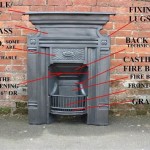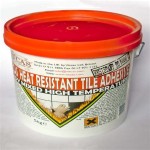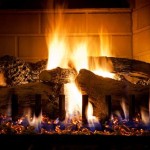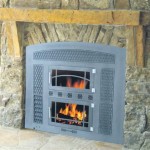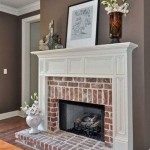Fireplace Remote Thermostats: Optimizing Comfort and Efficiency
Fireplace remote thermostats represent a significant advancement in home heating technology, offering users greater control and convenience compared to traditional fireplace operation. These systems integrate sophisticated temperature sensing and remote control capabilities, allowing for precise management of fireplace output and maintaining a consistent, comfortable environment. This article will explore the various facets of fireplace remote thermostats, including their functionality, benefits, different types, installation considerations, and maintenance requirements.
A fireplace remote thermostat operates by sensing the ambient temperature in the room and comparing it to a user-defined setpoint. Based on this comparison, the system automatically adjusts the fireplace's flame height or on/off status to maintain the desired temperature. This modulation ensures that the fireplace only produces the necessary heat, preventing overheating and conserving energy. The remote control component allows adjustments from anywhere within the signal range, enhancing user convenience and accessibility, especially for individuals with mobility limitations.
The core components of a fireplace remote thermostat system typically include a remote control unit, a receiver unit integrated with the fireplace, and a temperature sensor. The remote control unit acts as the user interface, allowing users to set the desired temperature, adjust flame height (where applicable), and program operating schedules. The receiver unit, often wired into the fireplace's gas valve or electrical system, interprets the signals from the remote and controls the fireplace's output accordingly. The temperature sensor provides feedback to the receiver, enabling closed-loop control and precise temperature regulation.
Benefits of Fireplace Remote Thermostats
The advantages of using a fireplace remote thermostat are numerous, ranging from enhanced comfort and convenience to improved energy efficiency and safety. These benefits contribute to a more enjoyable and cost-effective fireplace experience.
Firstly, enhanced comfort is a primary benefit. By maintaining a consistent temperature, the system eliminates the temperature fluctuations often associated with manual fireplace operation. Users can set their desired temperature and trust that the system will automatically adjust the fireplace's output to maintain that level of comfort, regardless of external temperature variations or drafts. This is particularly valuable in larger rooms or homes with uneven heating distributions.
Secondly, convenience is significantly improved. The remote control functionality allows users to adjust the fireplace settings from anywhere in the room, eliminating the need to manually adjust controls located on the fireplace itself. This is particularly useful for individuals with mobility issues or for those who prefer to adjust the temperature without leaving their seat. Programmable thermostats offer even greater convenience, allowing users to set schedules that automatically adjust the temperature based on time of day or day of the week, providing optimal comfort while minimizing energy consumption.
Thirdly, energy efficiency is increased. By automatically modulating the fireplace's output based on the desired temperature, the system prevents overheating and wasted energy. This can translate into significant savings on gas or electricity bills, particularly during periods when the fireplace is used frequently. The ability to set lower temperatures during periods of inactivity or sleep further contributes to energy conservation. Some advanced systems also incorporate learning algorithms that optimize energy usage based on historical temperature patterns, further enhancing efficiency.
Finally, enhanced safety is another key advantage. Some remote thermostats include safety features such as automatic shut-off in the event of a malfunction or excessive temperature. This can help prevent overheating and reduce the risk of fire. Additionally, remote control operation reduces the need to manually adjust controls near the open flame, minimizing the risk of burns or other injuries. These safety features provide added peace of mind, particularly for families with young children or pets.
Types of Fireplace Remote Thermostats
Fireplace remote thermostats are available in several different types, each offering varying levels of functionality and features. The choice of system depends on individual needs, budget, and the specific requirements of the fireplace installation.
Basic on/off remote thermostats are the simplest and most affordable type. These systems allow users to remotely turn the fireplace on and off, providing basic control over the heat output. They typically do not include temperature sensing or automatic modulation capabilities. This type is suitable for situations where simple remote control is desired, without the need for precise temperature regulation.
Thermostatic remote thermostats offer more advanced functionality. These systems incorporate temperature sensing and automatic modulation capabilities, allowing users to set a desired temperature and have the fireplace automatically adjust its output to maintain that level. They typically include a remote control with a display showing the current temperature and setpoint. This type is ideal for users who desire greater control over their fireplace's heat output and a more consistent level of comfort.
Programmable remote thermostats offer the most sophisticated features. These systems allow users to program operating schedules that automatically adjust the temperature based on time of day or day of the week. This allows for optimal comfort and energy efficiency, with the ability to set lower temperatures during periods of inactivity or sleep. Some models also include learning algorithms that optimize energy usage based on historical temperature patterns. This type is best suited for users who value maximum convenience and energy savings.
Millivolt remote thermostats are designed specifically for fireplaces that use a millivolt gas valve system. These systems operate on a low-voltage electrical signal generated by a thermocouple in the fireplace. They typically require a compatible receiver unit that is designed to work with the millivolt system. The remote control sends a signal to the receiver, which then controls the gas valve operation. These are usually simple on/off or basic thermostatic models.
Smart remote thermostats are the newest generation of fireplace control systems. These units connect to a home's Wi-Fi network, allowing users to control the fireplace from their smartphone or tablet. They often integrate with other smart home devices, such as smart speakers and voice assistants. Smart thermostats typically offer advanced features such as geofencing, which automatically adjusts the temperature based on the user's location, and energy usage monitoring. These advanced systems offer maximum convenience and integration with modern smart home technology.
Installation and Maintenance
Proper installation and maintenance are crucial for ensuring the safe and efficient operation of a fireplace remote thermostat. Incorrect installation can lead to malfunctions or safety hazards, while neglecting maintenance can reduce the system's performance and lifespan.
Installation should ideally be performed by a qualified technician who is familiar with fireplace systems and electrical wiring. The installation process typically involves wiring the receiver unit into the fireplace's gas valve or electrical system, mounting the remote control unit in a convenient location, and configuring the system settings. It is essential to follow the manufacturer's instructions carefully to ensure proper installation and avoid damage to the fireplace or thermostat system. For millivolt systems, correct polarity is critical for proper thermopile operation and preventing damage to the control module.
Regular maintenance is also important. This includes periodically cleaning the temperature sensor to remove dust or debris that can affect its accuracy. The remote control unit should be kept clean and dry, and the batteries should be replaced regularly to prevent malfunctions. Additionally, the fireplace itself should be inspected and cleaned regularly according to the manufacturer's instructions.
Troubleshooting can be necessary from time to time. Common issues include a non-responsive remote control, incorrect temperature readings, or a malfunctioning fireplace. In many cases, these issues can be resolved by checking the batteries in the remote control, ensuring that the receiver unit is properly connected, or recalibrating the temperature sensor. If the problem persists, it is best to consult with a qualified technician.
Safety precautions are paramount. Before performing any maintenance or troubleshooting tasks, always turn off the fireplace and disconnect the power supply. Never attempt to repair or modify the thermostat system without proper training and expertise. Use caution when working with electrical wiring and gas connections to avoid electric shock or gas leaks.
When selecting a fireplace remote thermostat, consider factors such as the type of fireplace, the desired level of functionality, the budget, and the ease of installation and maintenance. Choose a system that is compatible with the fireplace's existing control system and that meets the user's specific needs and preferences. Reading reviews and comparing different models can help in making an informed decision. Consulting with a qualified technician can also provide valuable insights and recommendations.
By understanding the features, benefits, installation requirements, and maintenance needs of fireplace remote thermostats, homeowners can make informed decisions about selecting and using these systems to optimize comfort, energy efficiency, and safety. Properly installed and maintained, a fireplace remote thermostat can provide years of reliable and convenient operation, enhancing the enjoyment of a fireplace for years to come.

Skytech 1001th Thermostat Fireplace Remote Control

Napoleon F60 On Off Fireplace Remote Control With Thermostat

Skytech 3301 Timer Thermostat Fireplace Remote Control

Everwarm Thermostat Remote With Lcd Display Millivolt For Gas Fireplac Watson Brothers Patio And Hearth

Skytech Sky 3301 Fireplace Remotes And Thermostats Blower Control Grey 80956959485

Skytech 3301 Fscrf Timer Thermostat Fireplace Electronic Fan Sd Remote Control

Fireplace Remote Control Thermostat Gas On Off Kit For Millivolt Valve Compatible With Skytech Ambient Majestic Monessen Vermont Display Screen Newegg Com

Kingsman Remote Control Electronic Pilotless Ignitionâ Thermostat Flame Adjusting â Ng Egtmrcn Vent Free Gas Stove Hvacdirect Com

Acumen Rck D Timer Thermostat Fireplace Remote Control

Skytech Ts R 2 Wireless Wall Mounted Thermostat Fireplace Remote Control
Related Posts

